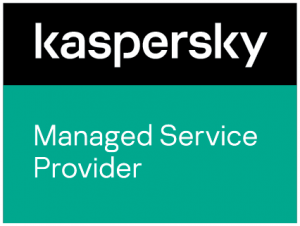What you need to know about Patch Management
Malware exists to take advantage of software flaws. To close those holes, patches are available. Why do so many vulnerabilities still exist without a fix? What makes patch management so difficult?
Unfortunately, security and IT professionals don’t work in a world where everything can be fixed instantly. The competing priorities and interests within large organizations determine trade-offs and compromises.
Most people would also prefer to avoid patch-related headaches now over headaches caused by cyber-attacks in the future when given the option. The delusion that “maybe we’ll get lucky and nobody will attack us” supports this irrational decision.
Not every patch is made equally. Others are not urgent, while others are. Some don’t need to be rebooted, others do. Some people can block third-party apps, while others can’t. Patch management is not an exact science; rather, it is an art due to the whims of complex systems and organizations, the irrationality of humans, and variations in patches.
Reasons Why Patch Management is Essential
Patch management refers to the process of learning about, obtaining, testing, implementing, and maintaining patches.
According to Accenture, over the next five years, cybercrime could cost businesses $5.2 trillion. How much of that cost could be avoided by using effective patch management, which is incredibly inexpensive?
Patch management is essential due to the sheer volume and complexity of systems that must be patched, the wide variety of patches available, and the difficulty of coordinating downtime in large organizations with competing priorities.
Organizations frequently act under the false assumption that security problems come before patches. In fact, cyber criminals frequently get the information they need to develop an exploit from the reporting and patching of vulnerabilities. For instance, WannaCry was developed after a patch “fixed” the vulnerability it exploited. (The patch “fixes” only after you apply it.) Threat actors have a window of opportunity because they are aware that many organizations won’t apply patches in a timely manner. In other words, when a patch is available, security is improved for those who deploy it and harmed for those who don’t.
Problems with Patch Management
Surprisingly, only 27% of cybersecurity teams polled for a recent IDC and SolarWinds white paper said patch management is a strategy for fending off cyberattacks. Additionally, 56% of reported vulnerabilities, according to Verizon, are not fixed within 90 days of disclosure. Furthermore, only 42% of small and midsize businesses automate patch management or even have plans to do so, according to a Kaseya survey.
Why Don’t Businesses Patch Everything? Why Don’t They Automate?
“Patch fatigue,” in my opinion, sums up the issue. Simply put, there are a lot of patches to process. More than 10,000 patches have been released by Microsoft this year alone.
Then there is the issue of technical debt, which requires IT to ensure that patching one system won’t break another. The time, plans, and goals of application owners and business users are impacted by patch testing.
Essential Components of Patch Management
Patch management is a form of fine art because it requires prioritization, thorough vulnerability assessment, soft people skills, creative thinking, awareness of the most recent threats, and even intuition born of experience. The following are some essential components of patch management:
First things first: Unless you have an infinite staff and budget, it is unlikely that you will be able to patch everything with the ideal procedures on the ideal schedule. The art of patch management includes thoughtful prioritization in large measure. Decide which systems and operations are most important to the operation of your company and which would suffer the most damage from an attack. You can find out where the most dangerous vulnerabilities are hiding with the aid of an advanced vulnerability assessment tool or service.
Don’t forget about the human element. Business users may be more afraid of patch-related downtime than they are of the catastrophic existential threat from unpatched systems. Culture is crucial to solving this problem. When it comes to reducing security risk, never give up on creating a culture of perspective and shared ownership.
Next, establish clear ownership rules and agreement on who is responsible for what. Share your responsibilities and service-level agreements (SLAs). Make ownership appropriate for your company, but be clear and communicate.
You should also worry about the little things. Although it can be tempting to concentrate on servers and workstations, don’t overlook internet of things (IoT) devices like network devices, cameras, and office and security equipment (e.g., network-attached storage). You still need to pay attention to legacy systems. Additionally, cloud resources require patching. Consider the patchable components of every system in the company, such as the server’s firmware, operating system, and all installed applications.
Share needs with teams and promote a collaborative environment. Utilize data on patch management effectiveness to communicate risk mitigation so that everyone is aware of its value in terms of time and money.
A straightforward and comprehensive strategy is another essential component of efficient patch management. Try to automate as much as you can, but don’t count on it. To keep a database of the hardware, software, and middleware updates that are available, find the best patch management solutions.
These either automatically update or notify users when they need to be manually implemented. Importantly, a solution must notify administrators of all unpatched software in the company. Reduce the number of tools you use by spending money on fewer, more effective products that can handle more patch management tasks across the largest number of platforms.
Keep the unintended consequences in mind. You must stay on top of both known software vulnerabilities and vulnerabilities brought on by software dependencies.
Always be mindful of the time. Never, for instance, update software and firmware simultaneously. Remember that you are a business. Patching and rebooting must therefore be carefully timed or scheduled to fit in with user and department schedules.
Keep an eye out for risks that result from risk mitigation. Patches must be tested in advance, and even those that pass testing require the added security of a roll-back strategy in case something goes wrong.
Last but not least, keep in mind to update your patch management tools.
Conclusion
Too many security patches are still being missed by businesses, which is leading to a large number of exploited vulnerabilities. A lesson to be learned here is that patching needs to be put at the forefront of an organization’s IT security strategy. Otherwise, the result is often devastating.
Global Secure Solutions’ Prometheus Shield is the leading patch management solution that identifies missing Windows patches, Office vulnerabilities, malicious software, and other IT security issues.
To learn more, visit : https://bit.ly/3vbJgLJ







